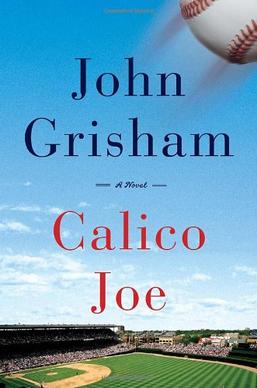 |
| Space Coast Stadium, Viera Florida -- Spring Training home of the Washington Nationals |
 |
| "Smartie" getting off of the Autotrain. Everyone laughed. |
While we drove to and from Gulf Shores, our Spring Training tradition sends us south on the Autotrain. This allows us to leave our bigger "road trip" car in D.C. and travel instead with our convertible Smart car, which would never otherwise see Florida. (I can’t imagine 900 miles of I-95 in Smartie).

The train is always a blast. -- dining cars, where, as a couple, we invariably sit across from people we have never met, and lounge cars where strangers sip cocktails together while watching the scenery pass. No wonder trains have always been fodder for mysteries. I can’t ride an overnight train without thinking of The Lady Vanishes, Hitchcock’s second-to-last British film. The 1938 movie (based on the largely forgotten book The Wheel Spins by Ethel Lina White), together with Hitchcock’s 1959 American film North by Northwest and Agatha Christie’s Murder on the Orient Express all capture the microcosm that is train travel – a self-contained slice of life, detached from the rest of the world by movement. No wonder that trains afford a perfect setting for classic golden age mysteries – how better to contain your story and all of your suspects? While ocean liners are a close second, nothing beats the tightly cabined setting of a train.
So to and from Spring Training I have little trouble conjuring up SleuthSayer thoughts. But what about baseball itself?
 For whatever reason the nation’s pastime hasn’t provided much of a setting for mystery stories. Perhaps readers will offer up other examples, but the only ones that spring readily to my mind are the Ed Gorgon stories by the great Jon L. Breen. Jon started the series way back in 1970 and has written that his original inspiration for Ed Gorgon, the baseball umpire who repeatedly is called upon to solve mysteries between calling balls and strikes, was that Frederic Dannay, then editor-in-chief at Ellery Queen Mystery Magazine, liked nothing better than baseball and dying messages. So Jon served up both in Diamond Dick, the first Ed Gorgon story.. That story, and the further installments in the series, spanning thirty years, are collected in Kill the Umpire: The Calls of Ed Gorgon published by Crippen and Landru in 2003. Jon's collection is a fun read and is available at Amazon, Barnes and Nobel, or direct from Crippen and Landru. (Tell Doug Greene that Dale sent you!)
For whatever reason the nation’s pastime hasn’t provided much of a setting for mystery stories. Perhaps readers will offer up other examples, but the only ones that spring readily to my mind are the Ed Gorgon stories by the great Jon L. Breen. Jon started the series way back in 1970 and has written that his original inspiration for Ed Gorgon, the baseball umpire who repeatedly is called upon to solve mysteries between calling balls and strikes, was that Frederic Dannay, then editor-in-chief at Ellery Queen Mystery Magazine, liked nothing better than baseball and dying messages. So Jon served up both in Diamond Dick, the first Ed Gorgon story.. That story, and the further installments in the series, spanning thirty years, are collected in Kill the Umpire: The Calls of Ed Gorgon published by Crippen and Landru in 2003. Jon's collection is a fun read and is available at Amazon, Barnes and Nobel, or direct from Crippen and Landru. (Tell Doug Greene that Dale sent you!) |
| Shoeless Joe and Ty Cobb, 1913 |
A real life episode that has repeatedly found its way into baseball lore followed Shoeless Joe Jackson's appearance before a grand jury empaneled to investigate the conspiracy allegations. On September 29, 1920, The Minneapolis Daily Star, during the course of reporting on the scandal, published the following account:
When Jackson left criminal court building in custody of a sheriff after telling his story to the grand jury, he found several hundred youngsters, aged from 6 to 16, awaiting for a glimpse of their idol. One urchin stepped up to the outfielder, and, grabbing his coat sleeve, said:The line, and the saga of Shoeless Joe, who may or may not have been guilty as charged, reverberated through baseball literature. In Bernard Malamud’s The Natural the central character, Roy Hobbs, is offered a bribe to throw a game and is then confronted by a child who says “Say it isn’t true, Roy.” (The line is only in the book, so don’t look for it in the 1984 Robert Redford film!) The story of Shoeless Joe is also at the heart of the Kevin Costner film Field of Dreams, based on Shoeless Joe by W.P. Kinsella. And, finally, anyone who has seen the movie or stage production of Damn Yankees (a story close to the heart of any Washington, D.C. baseball fan) will remember the refrain “Shoeless Joe from Hannibal Mo.” (Hannibal Mo. had nothing to do with Shoeless Joe, but, hey, a song’s gotta rhyme, right?)
"It ain't true, is it, Joe?"
"Yes, kid, I'm afraid it is," Jackson replied. The boys opened a path for the ball player and stood in silence until he passed out of sight.
"Well, I'd never have thought it," sighed the lad
Well I should stop here and start packing. We are off on one last winter trip to the south. Hopefully when we head back to Washington D.C. it will be spring, because if winter persists it will be me who you will hear lamenting “it ain’t true, is it, Joe?”






















.jpg)


